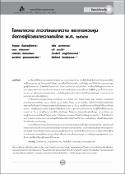บทคัดย่อ
การศึกษานี้เพื่อสำรวจความชุกของโรคเบาหวาน, ภาวะก่อนเบาหวาน, โรคที่เป็นปัจจัยเสี่ยง โรคหัวใจและหลอดเลือดในผู้ป่วยเบาหวาน เช่น โรคความดันโลหิตสูง, ภาวะเลือดมีไขมันมากเกิน, รวมถึงปัญหาการวินิจฉัยโรค และการควบคุมดูแลผู้ป่วยเบาหวาน ปัจจัยเสี่ยงโรคเบาหวาน และภาวะก่อนเบาหวานในคนไทย การศึกษาใช้ข้อมูลจากการสำรวจสภาวะสุขอนามัยของประชากรไทย พ.ศ.2547 โดยการสุ่มตัวอย่างแบบหลายขั้นตอน ในผู้ที่มีอายุ 15 ขึ้นไป 37,138 คน จาก 4 ภูมิภาค และกรุงเทพมหานคร การเก็บข้อมูลในการสำรวจประกอบไปด้วยการสัมภาษณ์, การตรวจร่างกายและการตรวจทางห้องปฏิบัติการ การศึกษาพบความชุกของโรคเบาหวานร้อยละ 6.6 (ร้อยละ 5.9 ในชาย ร้อยละ 7.2 ในหญิง), ความชุกของภาวะก่อนเบาหวานร้อยละ 12.6 (ร้อยละ 14.8 ในชาย ร้อยละ 10.5 ในหญิง), อุบัติการณ์โรคในประชาชนในเขตเทศบาลหรือเมืองสูงกว่าในเขตนอกเทศบาลหรือชนบทประมาณ 2 ใน 3 ของผู้ป่วยเบาหวานที่ไม่เคยได้รับการวินิจฉัยมาก่อน, และผู้ป่วยเบาหวานมีความชุกของปัจจัยเสี่ยงร่วมอื่นๆ สูงกว่าภาวะก่อนเบาหวาน และผู้ที่ไม่ได้เป็นเบาหวาน ; มากกว่า 2 ใน 3 ของผู้ป่วยเบาหวานที่มีแรงดันเลือดสูง ไม่เคยทราบว่าตนเองมีแรงดันเลือดสูง, และกว่าร้อยละ 80 ของผุ้ป่วยเบาหวานที่เลือดมีไขมันมากเกิน ก็ไม่เคยทราบว่าตนเองมีไขมันในเลือดสูงมากเช่นกัน ปัจจัยเสี่ยงโรคเบาหวานและภาวะก่อนเบาหวานส่วนใหญ่เป็นปัจจัยทางชีวภาพที่ปรับแก้ได้ เช่น แรงดันเลือดสูง, เลือดมีไขมันมากเกิน, น้ำหนักตัวเกินและอ้วนลงพุง จากการศึกษาสำรวจพบโรคเบาหวานและภาวะก่อนเบาหวานชุกมากเป็นปัญหาในประเทศไทย คณะทำงานนี้เสนอว่าสมควรเร่งสร้างความตระหนักต่อปัญหาโรคเบาหวานในประชาชน และควรเพิ่มประสิทธิภาพของบุคลากรสาธารณสุข ในการวินิจฉัยโรคและการดูแลควบคุมผู้ป่วยเบาหวาน และปัจจัยเสี่ยงโรคเบาหวาน, รวมถึงการค้นหาผู้ป่วยภาวะก่อนเบาหวานและผู้ป่วยเบาหวานรายใหม่ เพื่อลดภาระทางด้านสาธารณสุข, ภาระต้นทุนทางเศรษฐศาสตร์, ภาระด้านการเงินที่ต้องใช้ดูแลผู้ป่วยเหล่านี้ในอนาคต
บทคัดย่อ
Diabetes mellitus and its associated complications are major health and economic burdens worldwide,
in Asia and the Pacific and in Thailand. This burden is expected to continue to rise. The aim of this
study was to determine the prevalence of diabetes and impaired fasting glucose (IFG), their association
with cardiovascular risk factors, and evaluate the management of blood glucose, blood pressure and cholesterol
in diabetes by geographical region of Thailand. We used a database of the National Health Examination
Survey 2004, a stratified multistage sampling design representing 37,138 individuals aged ≥ 15
years; the data were collected using questionnaires, physical examination and laboratory examination
The prevalence of diabetes mellitus and IFG weighted to the national 2004 population was 6.6 percent
(5.9% in men and 7.2% in women) and 12.6 percent (14.8% in men and 10.5% in women), respectively.
Diabetes was more prevalent in urban areas. In two-thirds of those diabetics who had not been previously
diagnosed, the prevalence of associated risk factors was high among diabetics as well as those with IFG.
Two-thirds of the diabetics with concomitant high blood pressure were not aware that they had high
blood pressure. Eighty percent of the diabetics with concomitant high cholesterol were not aware that
they had high cholesterol. The risk factors for diabetes and IFG were male sex, high blood pressure, high
cholesterol, central obesity and overweight. Most risk factors could be modified by lifestyle interventions.
Improvements in prevention, diagnosis and treatment of diabetes and associated risk factors are
required in order to decrease the expected burden.


